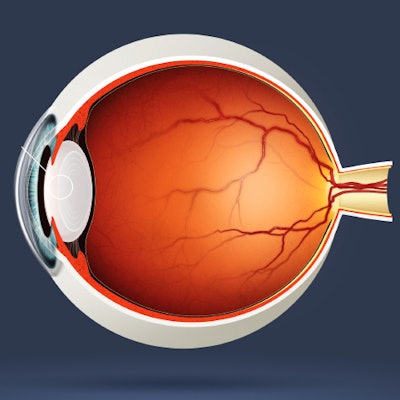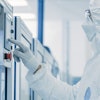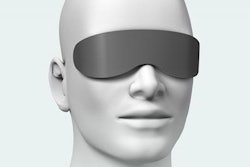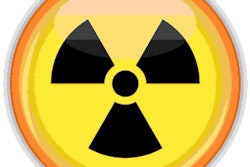
Technologists who perform nuclear medicine exams, either diagnostic or therapeutic, have an increased risk of developing cataracts, according to a study published in the February issue of Radiology.
Researchers found that technologists who reported performing diagnostic nuclear medicine procedures had an 8% higher risk of cataracts than those who never conducted the exams. Rates were also higher for therapeutic nuclear medicine studies.
It doesn't help that there has been a surge in the number of nuclear medicine procedures performed annually in the past few decades -- from 7 million in the early 1980s to 18 million in 2006 -- as well as an increase in the use of high-radiation-dose procedures such as cardiac imaging and PET, wrote the group led by Dr. Marie-Odile Bernier, PhD, from the U.S. National Cancer Institute (NCI) and the Institut de Radioprotection et de Sûreté Nucléaire in Fontenay-aux-Roses, France.
"In contrast to professionals who work with standard radiologic procedures, those who work with nuclear medicine procedures cannot avoid being in close contact with radioactive pharmaceuticals when they prepare and/or administer injections during the imaging process," the authors wrote.
Occupational exposure
Although previous studies have examined the health effects of occupational radiation exposure on medical staff, there is little research that explores how technologists who perform nuclear medicine exams are affected, Bernier and colleagues wrote. This gap in the literature needs to be addressed: Although nuclear medicine workers represent only 5% of those exposed to radiation on the job, they receive 10% of the collective radiation dose, according to a 2008 report from the United Nations Scientific Committee on the Effects of Atomic Radiation (UNSCEAR).
Cataracts are a tissue reaction to radiation that can occur at thresholds of 2 Gy, although some studies have suggested they can be induced at even lower radiation levels, the authors wrote. For their study, conducted under the auspices of the NCI, Bernier and colleagues estimated the risk of cataracts among U.S. technologists based on their work histories and radiation protection practices (Radiology, February 2018, Vol. 286:2, pp. 592-601).
The researchers used data from two surveys completed between 2003 and 2005 and 2012 and 2013 by 42,545 radiologic technologists who had been identified from American Registry of Radiologic Technologists records. These 42,545 participants were followed from the date they completed the first survey to the date they were either diagnosed with cataracts or completed the second survey, with a mean follow-up period between the two questionnaires of 7.5 years. Bernier's group then stratified the survey results according to specific time periods that ranged from before 1940 to the present.
Of the study participants, 30% said they had performed nuclear medicine procedures at least once a week. A total of 7,137 cataract diagnoses were reported.
The researchers found an increased risk of cataracts among the technologists who had performed at least one nuclear medicine procedure, compared with those who had never done a procedure, with a 7% increase in risk associated with diagnostic exams and a 10% increase for therapeutic exams.
In addition, cataract risk was higher for technologists who first performed diagnostic nuclear medicine procedures in the 1980s to the early 2000s than for those who started performing the procedures in the 1950s (p < 0.001). It was also higher for those who performed therapeutic exams from the 1970s to the early 2000s than for those who performed them before 1970 (p < 0.01).
The higher risk is illustrated in the following table, in which nuclear medicine technologists who performed the exams had higher hazard ratios for cataract diagnosis based on various work parameters (all values above 1.00 represent increased risk).
| Risk of developing cataracts among nuclear medicine technologists | |
| Work parameter | Hazard ratio |
| Has ever performed nuclear medicine procedures | |
| No | 1.00 |
| Yes | 1.08 |
| Has ever performed diagnostic nuclear medicine procedures | |
| No | 1.00 |
| Yes | 1.07 |
| Decade first performed diagnostic nuclear medicine procedures | |
| 1950s | 1.00 |
| 1960s | 0.97 |
| 1970s | 1.09 |
| 1980s and after | 1.30 |
| Has ever performed therapeutic nuclear medicine procedures | |
| No | 1.00 |
| Yes | 1.10 |
| Decade first performed therapeutic nuclear medicine procedures | |
| 1950s | 1.00 |
| 1960s | 1.00 |
| 1970s | 1.18 |
| 1980s and after | 1.15 |
Although Bernier and colleagues found a somewhat reduced risk of cataracts associated with shielding during therapeutic nuclear medicine procedures in the 1980s, overall there was no association between cataract risk and either the use of radiation protection techniques or typical practices for handling radionuclides, they noted.
"Increases in radiopharmaceutical production, iodine-131 therapy administration, and PET/CT use in recent decades may have contributed to higher eye lens doses in technologists who perform nuclear medicine procedures," the authors wrote. "In addition ... there has been discussion of a potential effect on cataract development from radiation doses lower than the previously accepted threshold of 0.5 Gy."
More research needed
The study did have some limitations; in particular, there was a lack of individual occupational dosimetry estimates specific to nuclear medicine -- which suggests that the association between cataract risk and nuclear medicine procedures needs more research, the group wrote.
"To confirm and quantify [the relationship between cataract development and these procedures], the estimation of individual radiation doses to the eye lens from both occupational and personal medical sources should be a key focus of further study," Bernier and colleagues concluded.





















